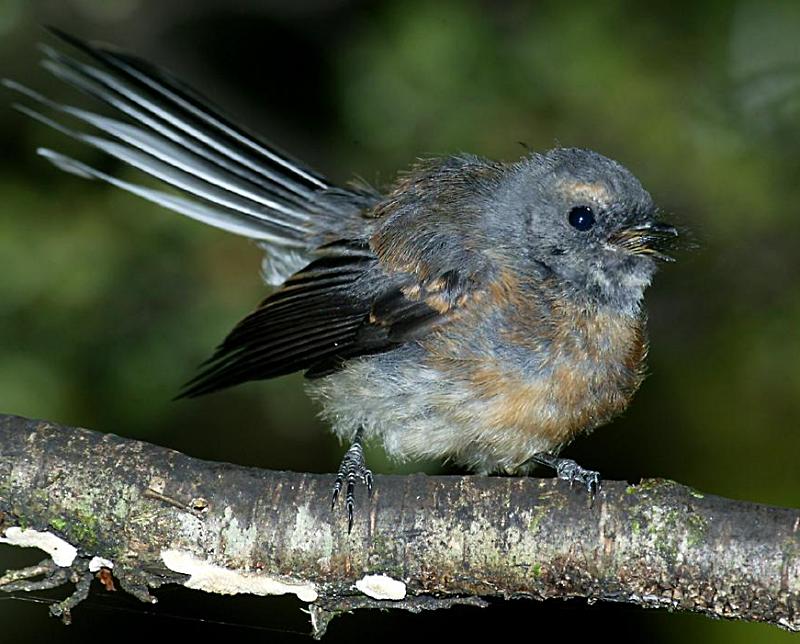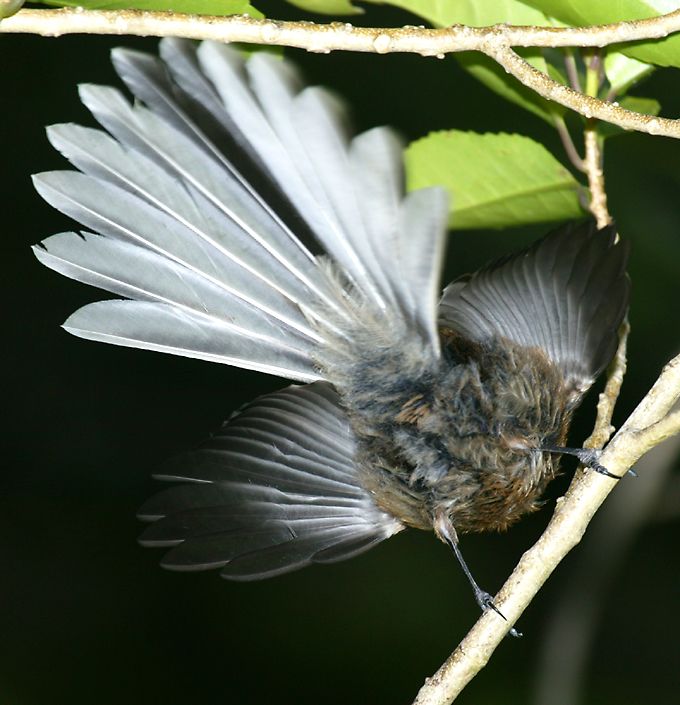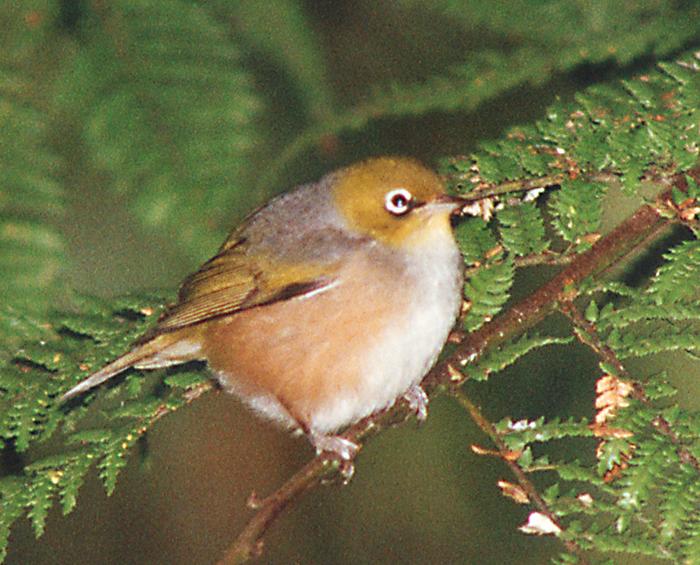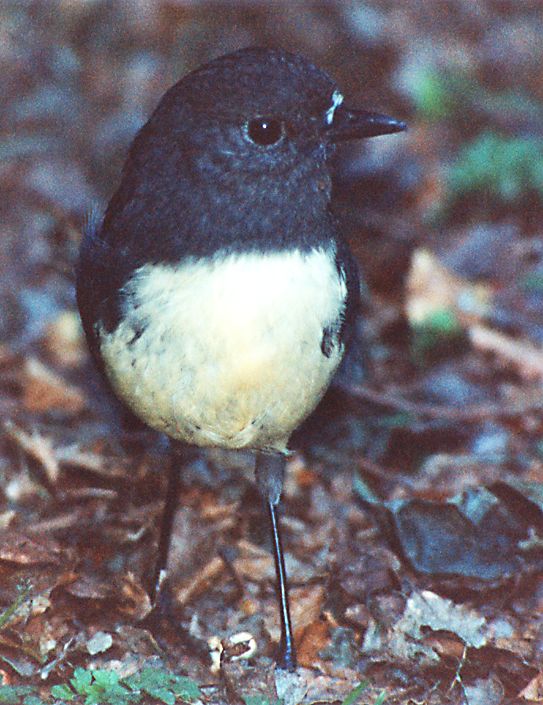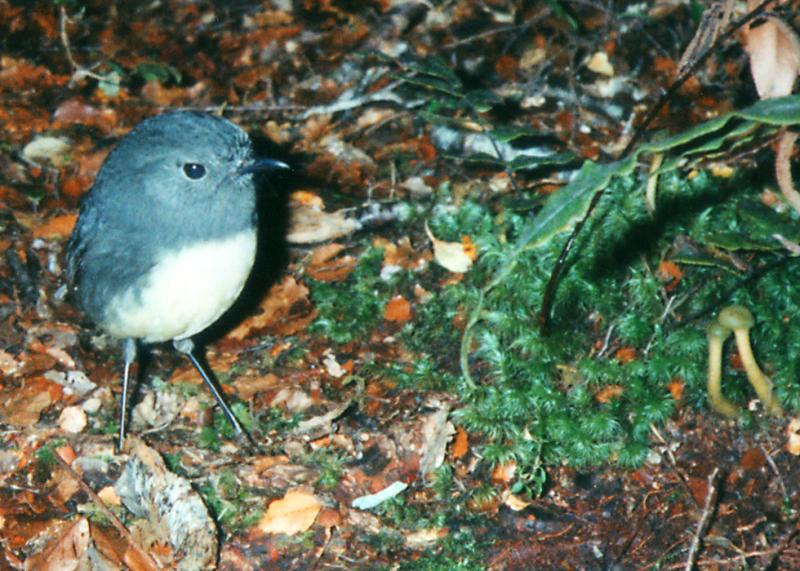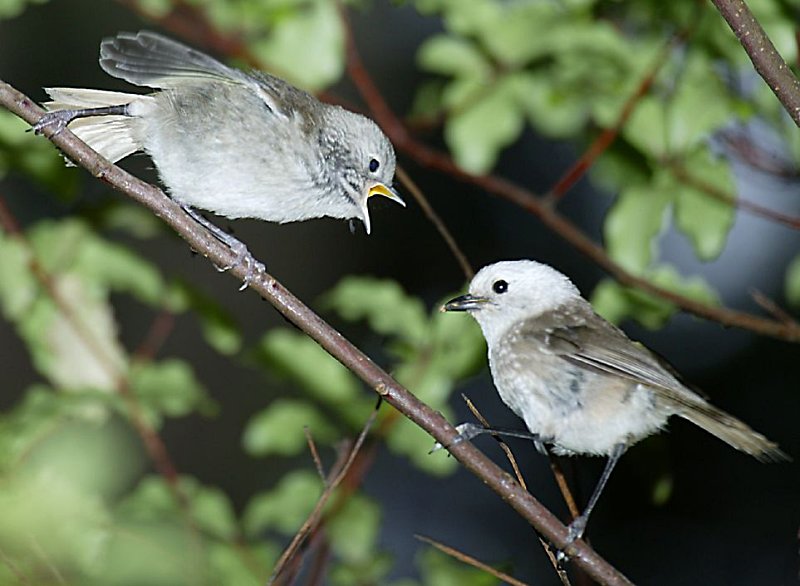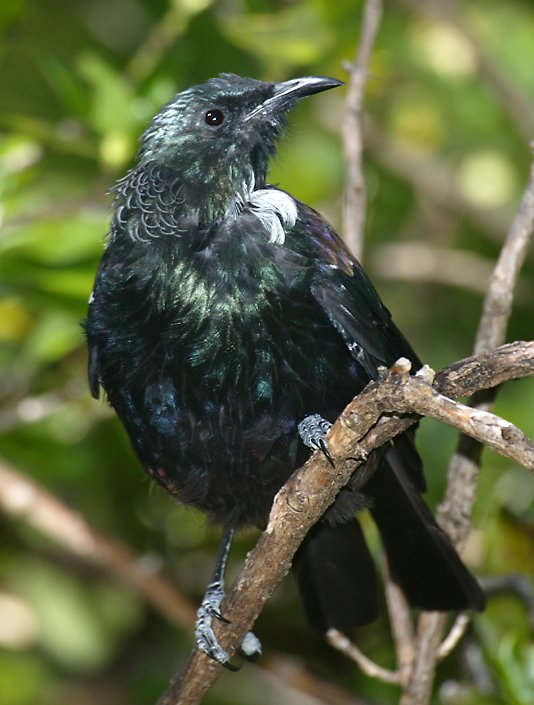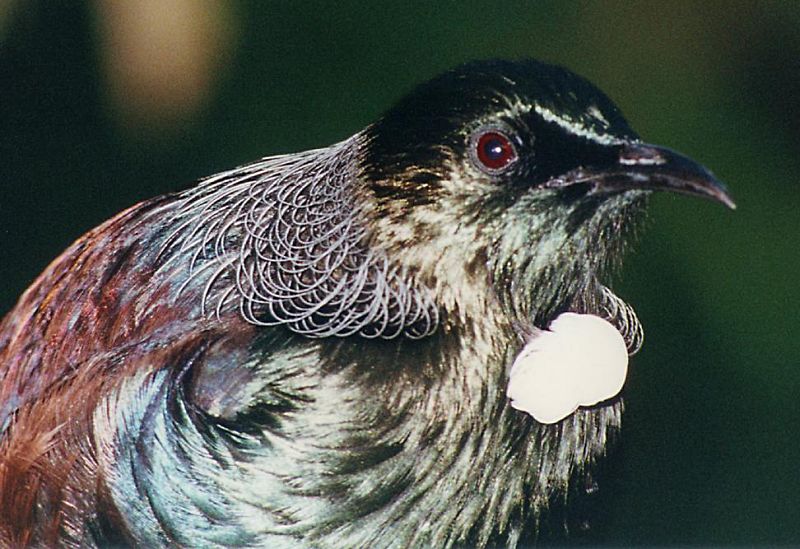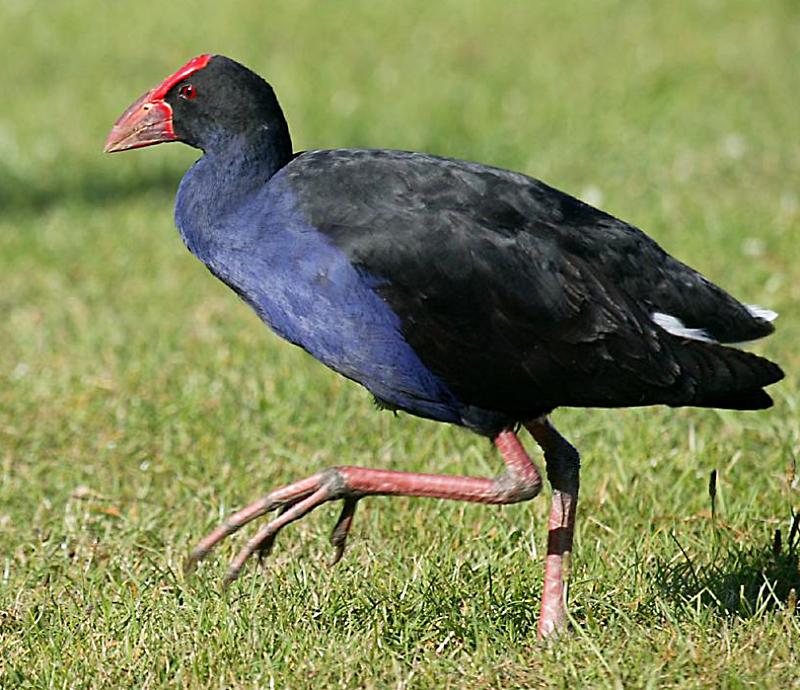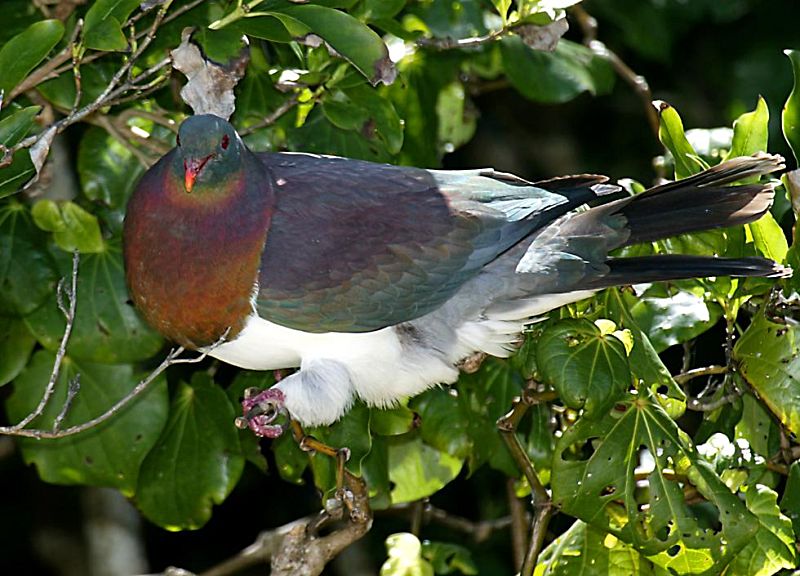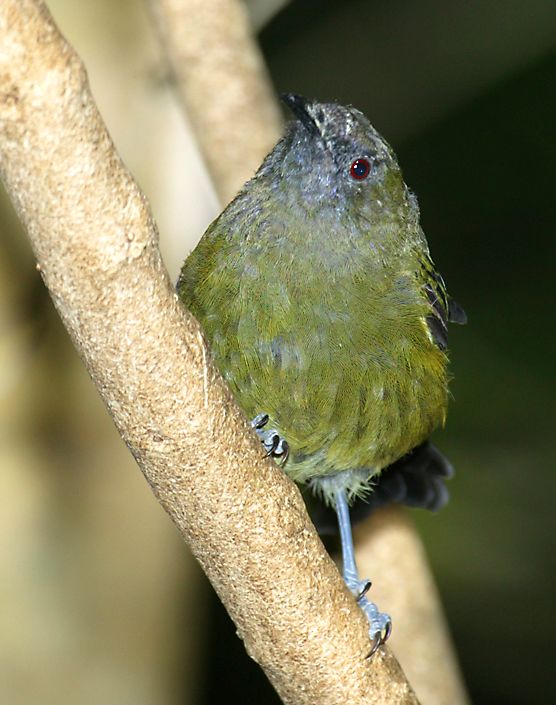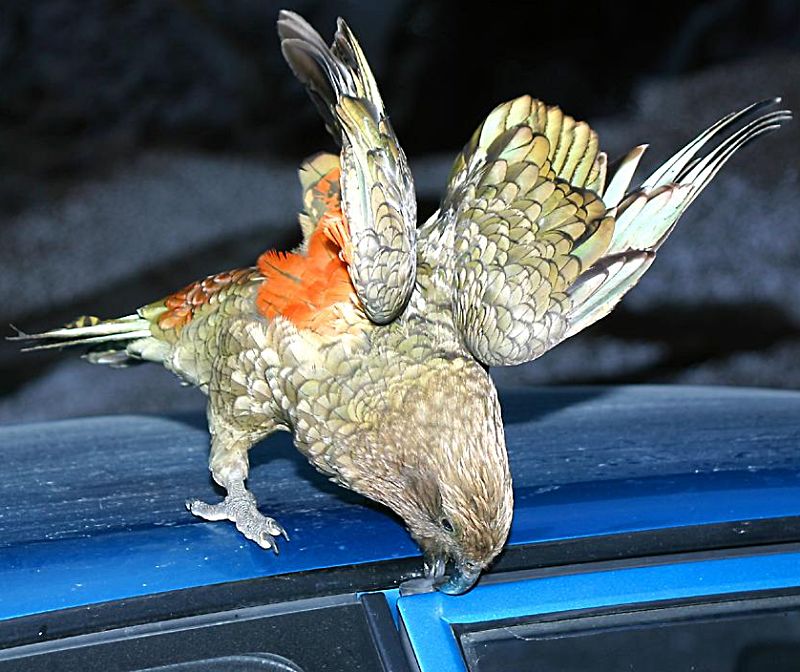Common Birds of the New Zealand Forest
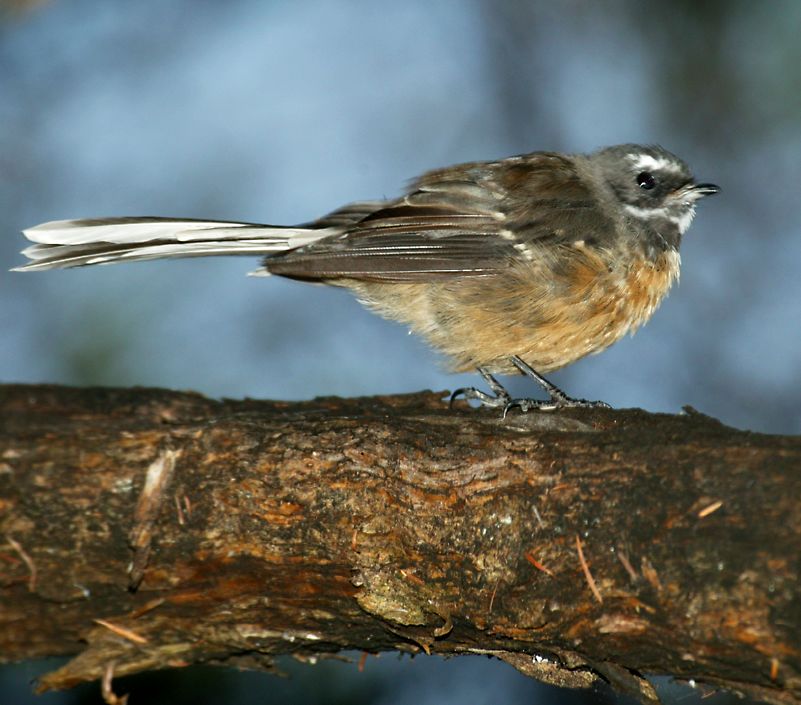
Here's one of the most well known and liked New Zealand birds, the fantail. |
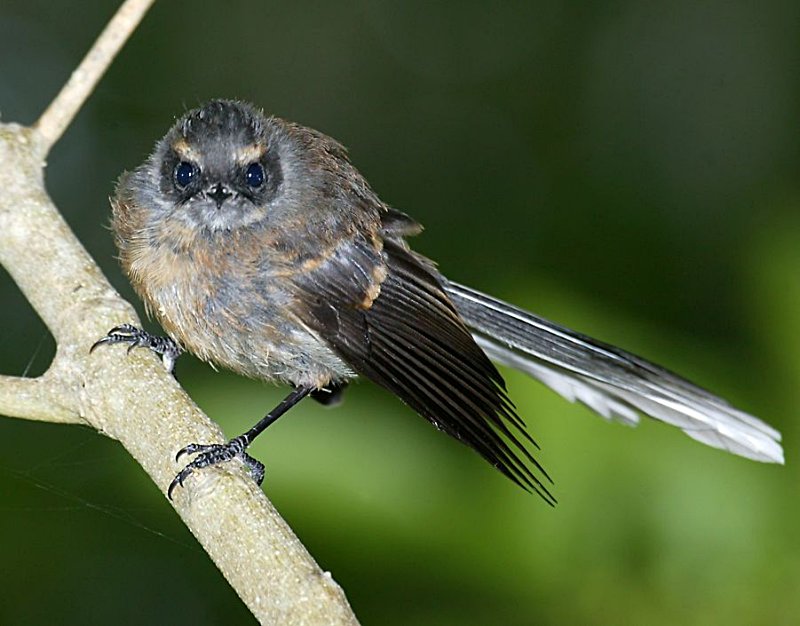
This friendly little creature flits around the forest looking for insects and even seeks out human contact, following people as they walk through the bush and catching the insects which we disturb. |
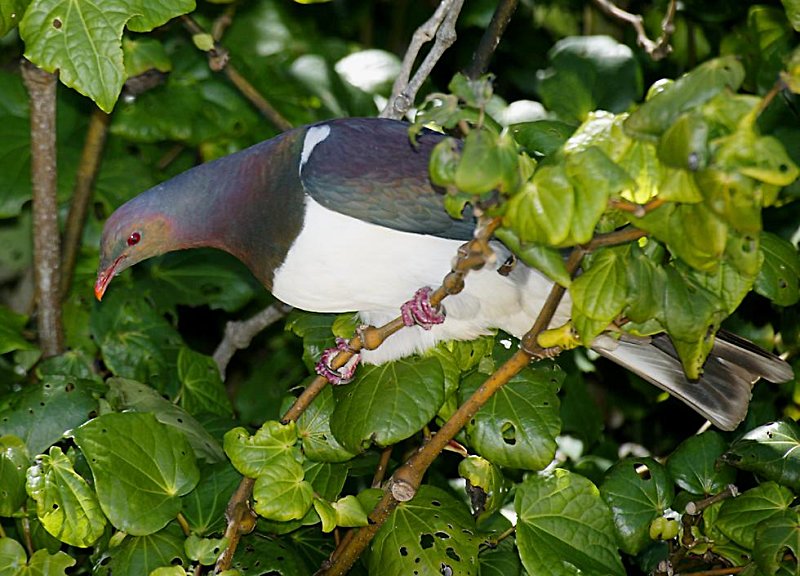
Like the tui, the wood pigeon is able to make a living in city parks and suburban gardens, where it searches out berries, or leaves and shoots if there are no berries. |
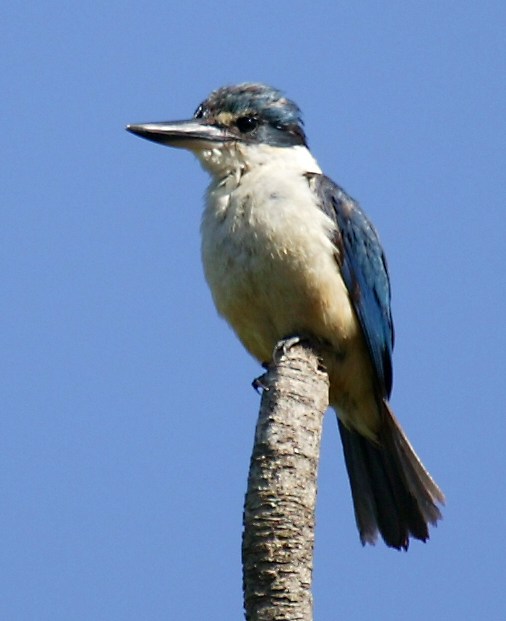
There's only one type of kingfisher found in New Zealand, a sub-species of the sacred kingfisher found in Australia and parts of Melanesia. They're very aggressive, attacking other birds and even predatory mammals, and often eat mice in addition to their regular diet of small fish, lizards, worms and insects. Nevertheless, like most kingfishers around the world it's very difficult to get close enough for a decent photograph. This shot was taken on Tiritiri Matangi island, as were the earlier photographs of the whitehead, tui, wood pigeon and pukeko, as well as the next photograph. |
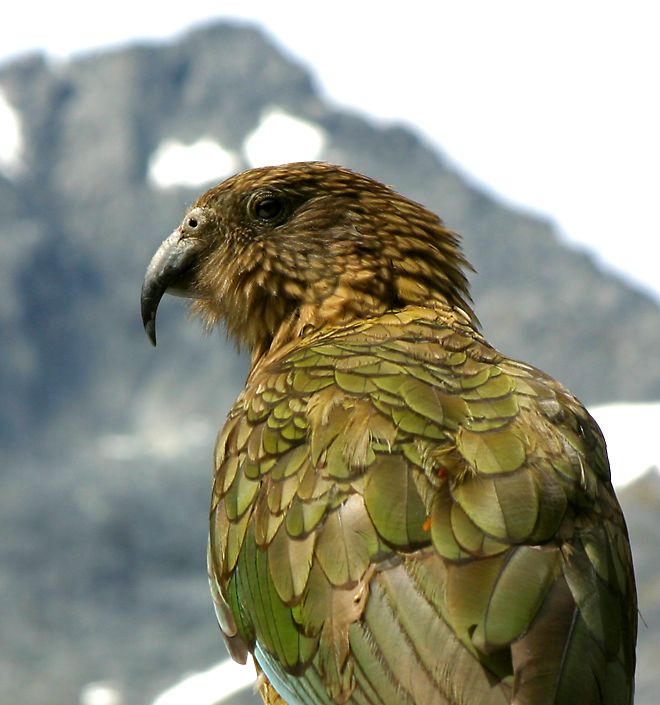
As you might have noticed, one characteristic of all of the birds on this page is their feistiness, which has allowed them to survive despite the arrival of humans and their accompanying horde of mammalian predators like rats, cats, stoats and ferrets, as well as competitive species like deer which have totally stripped away the forest undergrowth. Each of these birds is impressive, but this one is definitely the King of the Feisty. The kea is one of several parrots found only in New Zealand. Some of these, like the red-crowned and yellow-crowned parakeets, are fairly ordinary as parrots go, others are far from ordinary, like the kakapo, which is not only the world's largest parrot, weighing up to 3.5 kilograms, but is also flightless and nocturnal, and has a very strange and unbirdlike "booming" call. Sadly, it has nearly no concept that there are now enemies in its world or how it should defend itself from them, and this has made the kakapo extremely rare, with fewer than a hundred left in the world. The kea is another extraordinary parrot, but thankfully it's able to take care of itself. The kea isn't nocturnal, nor is it flightless, but it is unusual in being the world's only alpine parrot. High mountains in the South Island are the best place to look for them, both of these photos were taken at the top end of the Homer tunnel which leads across to Milford Sound. Keas are extremely intelligent, scoring better on intelligence tests than most primates, and research has shown that they're one of the very few animals in the world which are self-aware. They've even learned how to take advantage of the animals introduced by humans. For many years farmers complained that keas were killing sheep at night, only to be ridiculed for this idea by environmentalists. However, eventually night camera footage was obtained of keas flying onto the backs of sheep and using their sharp hooked bills to dig into the backs of the sheep in order to feed on the fat around their kidneys. Of course it's very unfortunate for the sheep, and some people refer to the kea as "the feathered wolf". |
